- About us»
- Net income calculator»
- Population aging»
-
- Least developed regions»
-
- Average wage
- Material need benefits
- Meal allowance
- Counties of Slovakia
- Inflation
- Living and Subsistence Minimum
- Unemployment of Czechia and Slovakia
- NACE Classification
-
- Life expectancy
- Gender differences
- Youth unemployment and NEET
- Minimum wage in EU
- Unemployment rates of different age groups
- Share of salaries on GDP
- Unemployment rate
- Employment rate
- Percentage of employees ususally working at nights
- Long term unemployment
- NEET
-
- Bratislava and surroundings
- Kopanice
- Danube river
- lower Vah river
- middle Vár river
- upper Nitra river
- lower Nitra river
- Mining cities
- Kysuce a Orava
- upper Vah river - Liptov
- Spiš cities
- upper Hron river
- Juhoslovenská kotlina
- Košice fold and Torysa river
- upper Zemplín
- lower Zemplín
- EU regions
- NUTS3 regions of Slovakia
- LAU1 dataset
-
- Projects and activities
- Inclusive growth»
- Good work
- Project SKRS
- Social system – reality and vision
-
- Education of unemployed
- Young unemployed not taking part in education
- Proposal to change the system of education funding
- Library
- News»
- Contact
Extremadura – ES43
EU regions: Spain > Centro > Extremadura
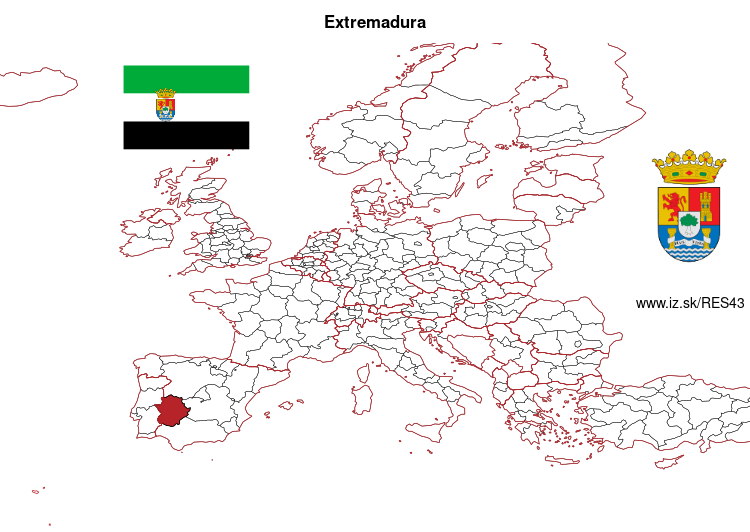
| Indicator | Period | Value |
|---|---|---|
| Life long learning | ||
| life long learning participation | 2024 | 14.8 |
| Part time jobs and flexible employment | ||
| percentage of part time workers | 2024 | 12.13 |
| percentage of part time workers, men | 2024 | 4.15 |
| percentage of part time workers, women | 2024 | 22.05 |
| Gender differences | ||
| gender gap in employment rate | 2024 | 82.2 |
| gender gap in unemployment rate | 2024 | 134.33 |
| Graduates and young people | ||
| unemployment rate of youth with elementary education | 2024 | 40.5 |
| NEET | 2024 | 8.6 |
| Gross domestic product | ||
| GDP per capita in PPS of EU average | 2023 | 69 |
| Employment | ||
| employment rate | 2024 | 60.5 |
| Social exclusion | ||
| people at risk of poverty or social exclusion | 2020 | 38.7 |
Extremadura slovensky: ES43
Subregions: Province of Badajoz, Cáceres Province
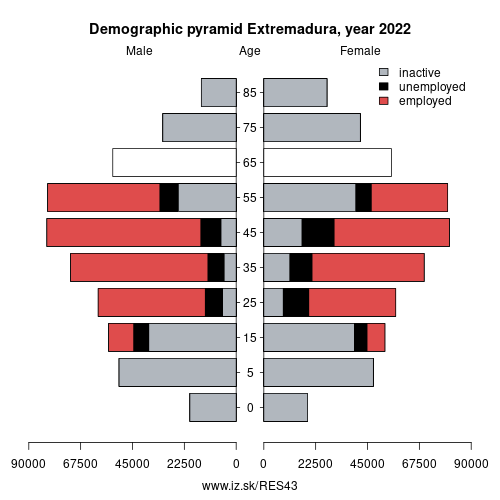
Unemployment
| Indicator | Period | Value |
|---|---|---|
| Unemployment | ||
| unemployment rate | 2024 | 15.6 |
| youth unemployment rate | 2024 | 35.4 |
| Long term unemployment | ||
| long term unemployment | 2024 | 5.1 |
| share of long term unemployed | 2024 | 32.6 |
Demographics
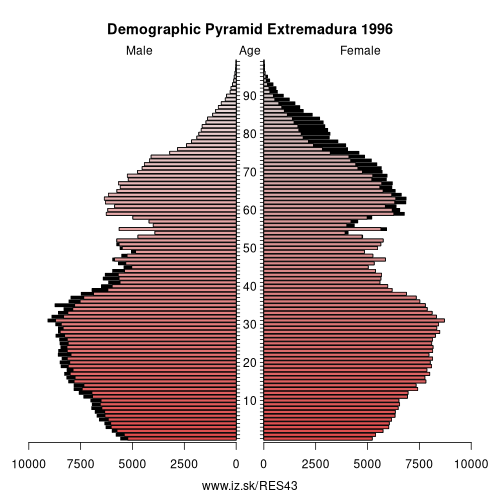
| Indicator | Period | Value |
|---|---|---|
| Demographics | ||
| number of inhabitants | 2024 | 1 054 681 |
| population density | 2023 | 25.8 |
| old-age dependency ratio | 2024 | 34.4 |
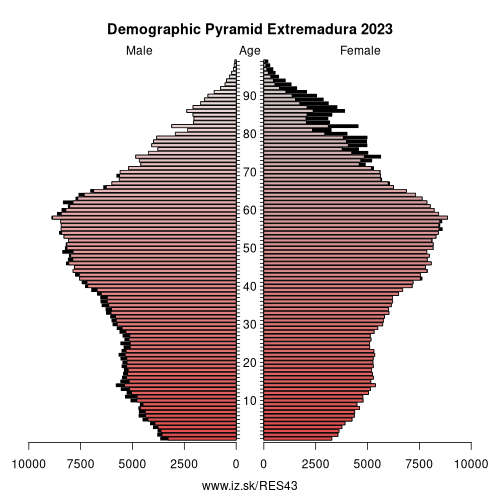
Employment by sectors, Extremadura
| NACE r2 | % | NACE r2 | % | ||
|---|---|---|---|---|---|
| A | 38.8 | 9% | B-E | 41.5 | 10% |
| F | 29.5 | 7% | G-I | 107 | 26% |
| J | 8.6 | 2% | K | 7.8 | 2% |
| L | 2.5 | 1% | M_N | 28.5 | 7% |
| O-Q | 133.5 | 32% | R-U | 20.4 | 5% |
| TOTAL | 418.1 | 100% |
Data for the period year 2024. Source of the data is Eurostat, table [lfst_r_lfe2en2].
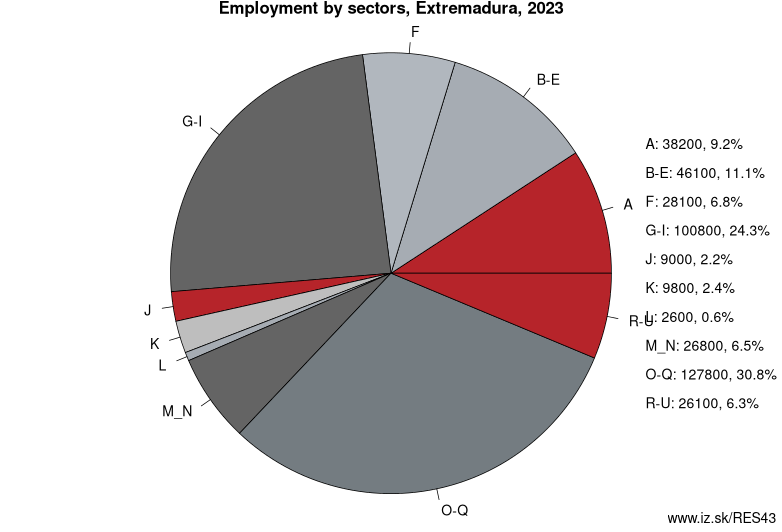
From Wikipedia : Extremadura (; Spanish: [e(ɣ)stɾemaˈðuɾa]) is an autonomous community of the western Iberian Peninsula whose capital city is Mérida, recognised by the Statute of Autonomy of Extremadura. It is made up of the two largest provinces of Spain: Cáceres and Badajoz. It is bordered by the provinces of Salamanca and Ávila (Castile and León) to the north; by provinces of Toledo and Ciudad Real (Castile–La Mancha) to the east, and by the provinces of Huelva, Seville, and Córdoba (Andalusia) to the south; and by Portugal to the west. Its official language is Spanish.
It is an important area for wildlife, particularly with the major reserve at Monfragüe, which was designated a National Park in 2007, and the International Tagus River Natural Park (Parque Natural Tajo Internacional). The government of Extremadura is called Gobierno de Extremadura.
The Day of Extremadura is celebrated on 8 September. It coincides with the Catholic festivity of Our Lady of Guadalupe.
Geography
Extremadura is contained between 37° 57′ and 40° 85′ N latitude, and 4° 39′ and 7° 33′ W longitude.
The area of Extremadura is 41,633 km2 (16,075 sq mi), making it the fifth largest of the Spanish autonomous communities.
Other: Centro, Castilla–La Mancha, Castile and León, Extremadura
Neighbours: Castilla–La Mancha, Andalusia, Centro region, Castile and León, Alentejo region
Subregions: Province of Badajoz, Cáceres Province
Suggested citation: Michal Páleník: Europe and its regions in numbers - Extremadura – ES43, IZ Bratislava, retrieved from: https://www.iz.sk/PES43, ISBN: 978-80-970204-9-1, DOI:10.5281/zenodo.10200164

 Share
Share Facebook
Facebook Twitter
Twitter News
News